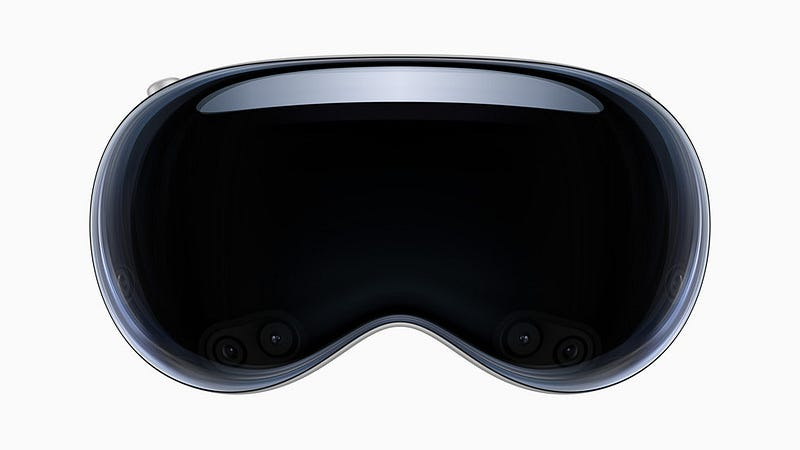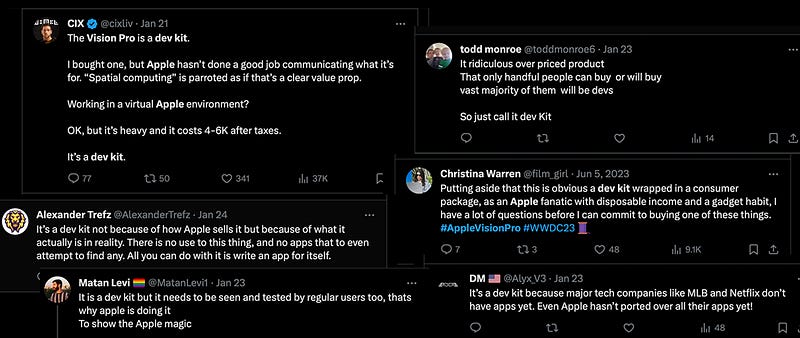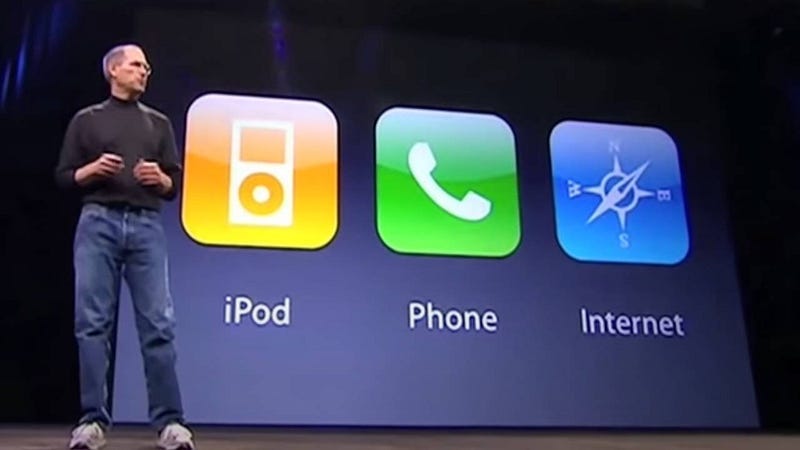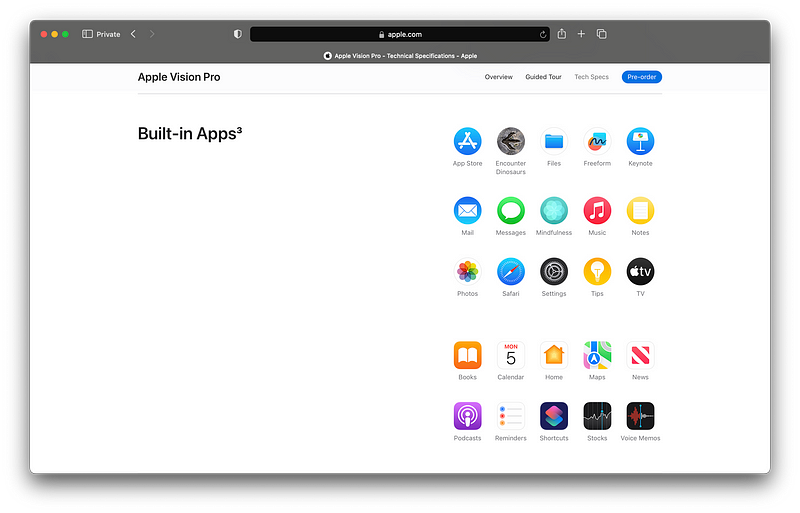Apple Vision Pro — A dev kit in disguise?
As the Apple Vision Pro (AVP) launch date nears, there’s a buzz in the tech world, with plenty of early takes and hot takes making the…
As the Apple Vision Pro (AVP) launch date nears, there’s a buzz in the tech community that’s caught my eye, suggesting that the AVP is more akin to a developer’s kit or a beta device. This viewpoint, while understandable, seems off the mark. It’s easy to see why the first iteration of a groundbreaking product might be confused with a developer’s tool, but there’s a clear distinction to be made.
Fundamentally, people are taking issues with two things. Features (the lack of) and price. The logic goes a little like this:
AVP is considered either too expensive for an average consumer or that it doesn’t do enough to justify the price →
therefore AVP launched too early →
Apple is masquerading a dev kit as a consumer product.
I’d like to unpack these concerns and offer a different perspective.
The missing killer-app
Killer-app is often is misconstrued concept. To quote wikipedia’s definition
A killer application (often shortened to killer app) is any software that is so necessary or desirable that it proves the core value of some larger technology, such as its host computer hardware, video game console, software platform, or operating system. Consumers would buy the host platform just to access that application, possibly substantially increasing sales of its host platform.
In other words, I’ve always felt that killer-app is a term invented primarily to simplify a business analyst’s job. Can we identify a “thing” that accelerates the sales of a host platform?
The problem with this view is that killer-app is an ill-suited analogy for general computing device by definition. It might be great for a game console. Legend of zelda is no doubt a great killer app for a nintendo system. But the success of a generic computing platform hinges on its ability to serve a wide spectrum of users across all domains of task. In fact, I’d argue that a computing platform with an overpowering killer app will over time converge into a narrow purposed device. This is not what Apple is striving for with AVP.

Instead, we should zoom out and understand that spatial computing as defined by Apple is the killer-app. The device’s wearability, user interaction model, spactial experience, human interaction model and compute power all contributes to AVP’s “killer app”. AVP did launch with a killer-app, it’s just not the kind you are thinking of.
Was there a killer app for iPhone?
In many respect we can predict the future by inspecting the past. If we were to audit our daily iPhone usage, it is clear that very little of the killer-apps presented by Steve Jobs himself is relevant to iPhone users today.
Making a phone call, no matter how delightful that experience might be, is not the primary reason why we consider our iPhones the best mobile computing device. It is clear, but only in hindsight, that multi-touch is in fact iPhone’s killer app.
If spatial computing is done correctly, AVP will have the foundation it needs for general computing to emerge over time. And whether Apple gets it just right for gen 1, remains to be seen. It’s impossible to know without long term usage of the device. But Apple certainly has the track record to back this up. Both first generation of iPhone and Apple Watch launched with overwhelmingly positive user satisfaction (that is despite iPhone not having an AppStore, and Apple Watch equipped with severely handicapped hardware).
Subtle hints from Apple
Apple is very confident that the debut AVP will impress right from the get-go. How do we know that? Well, there’s simply no rush to push this product out. Over the past decade, Tim Cook has more than proven himself, guiding Apple to new heights in valuation and overseeing several successful product launches.
This is a stark contrast to the days surrounding the Apple Watch launch, when there was a keen sense of anticipation to see if Cook could continue Apple’s legacy of innovation. The timing for the AVP is deliberate; conceived as far back as 16 years ago, Apple has been biding its time, waiting for the perfect moment to unveil a product that meets their stringent criteria for customer experience — not a moment sooner.
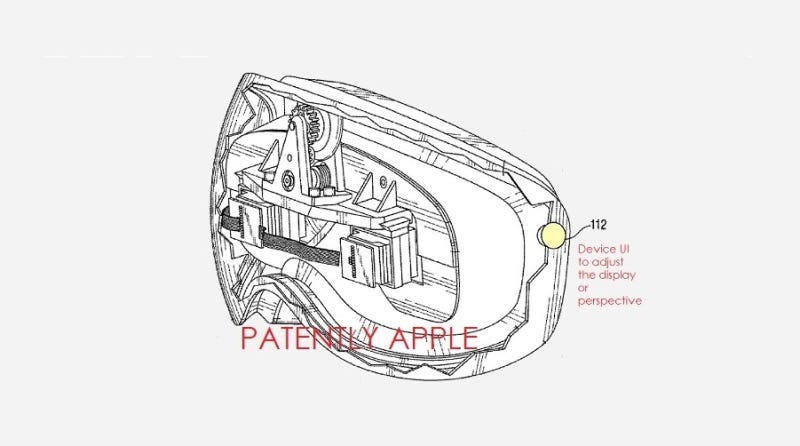
It’s worth mentioning that the AVP stands out on Apple’s website as the sole product with a list of preinstalled apps featured in its specs. This nuanced approach by Apple serves as a reassurance to customers, subtly conveying that the AVP is far from being an “unfinished product.”
Another noteworthy move by Apple is the inclusion of the app Freeform. Launched in late 2022 as a whiteboard/collaboration tool, my theory is that Freeform was secretly developed primarily for visionOS. While iOS and iPadOS certainly benefit from it, these platforms had thrived for years without a first-party whiteboarding tool. It appears Apple identified a gap in the AVP’s out-of-the-box experience and chose to proactively fill it themselves, rather than rely on third-party contributions.
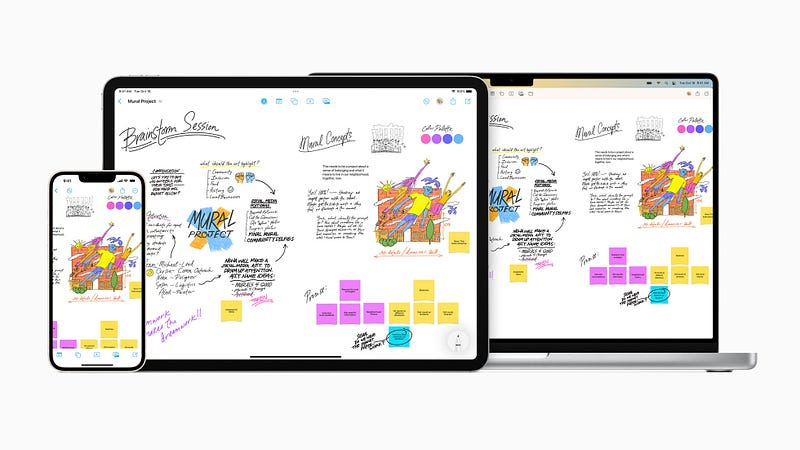
New Platforms Don’t Come Around Often
Category defining product launches are rare. Tech critics aren’t accustomed to reviewing a paradigm shift. It’s much easier to review iterative improvements.
Are the critics right with the AVP? Only time will tell. In a few months, if we see customers unsatisfied and unengaged with the product. Then perhaps they are. But I don’t think that will be the case.
Customers might find shortcomings and holes in the product at times, but those will be easily overlooked when users are filled with joy in the day-to-day usage of the device. They will yearn for more, eagerly wishing the platform would mature quicker because Apple has gotten all the basics just right, and it feels just like magic. The exact feeling we had with the first iPhone in our hands. Limited, handicapped, but without a doubt, a glimpse of the future.




